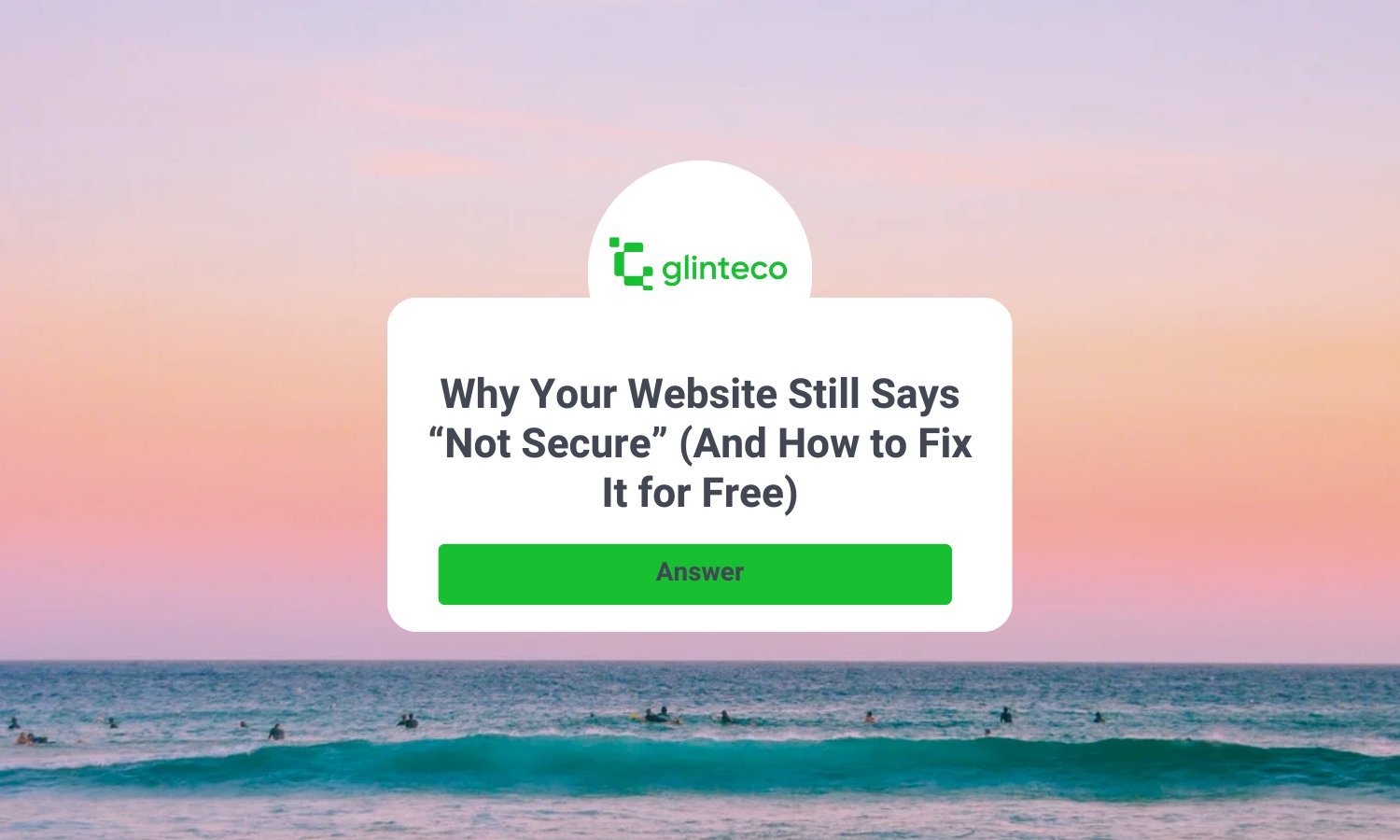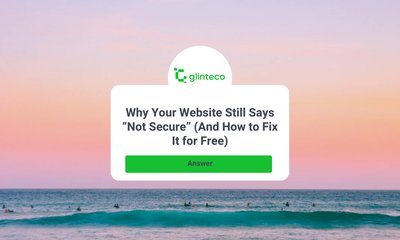Why Your Website Still Says “Not Secure” (And How to Fix It for Free)
By khoanc, at: July 1, 2025, 7:41 p.m.
Estimated Reading Time: __READING_TIME__ minutes


If your website still shows that dreaded “Not Secure” warning in the browser, chances are… you’re losing customers before they even see what you offer.
Here’s the good news: you can fix this in under 30 minutes.
Here’s the better news: it won’t cost you a cent.
Let’s talk about SSL certificates, why they matter, and how to get one completely free with Let’s Encrypt.
What Is an SSL Certificate, Really?
An SSL certificate is like a secret handshake between your website and your visitors. It encrypts all communication, making sure no one can eavesdrop or tamper with your data. It also changes your site from:
http://yourbusiness.com → 🚫 Not Secure
to:
https://yourbusiness.com → 🔒 Safe, trusted, professional
It’s not just about trust, it’s also about:
-
Better SEO rankings
-
Protection for your contact forms, logins, and payment data
-
Meeting basic security expectations from customers, browsers, and even Google Ads
The Free Fix: Let’s Encrypt
Let’s Encrypt is a free, open certificate authority used by millions of websites (including companies like Slack and Shopify). It issues SSL certificates for free, and they’re just as secure as the expensive ones.
You’ll use a tool called Certbot to get and install one easily.
Step-by-Step: Get SSL For Free (with Certbot)
We’ll assume your site runs on Ubuntu + Nginx, but we can adapt for Apache or other stacks.
Step 1: SSH into Your Server
ssh user@your-server-ip
Step 2: Install Certbot
sudo apt update
sudo apt install certbot python3-certbot-nginx
Step 3: Run Certbot (and watch the magic)
sudo certbot --nginx
Certbot will automatically:
-
Talk to Let’s Encrypt
-
Verify your domain
-
Install the SSL certificate
-
Reload Nginx with HTTPS ready to go
Done. You’re officially on the secure side of the internet.
Bonus: Auto-Renew Every 90 Days
Let’s Encrypt certs expire every 90 days, but Certbot handles that too:
sudo certbot renew --dry-run
Your server will renew it automatically via cron or systemd, no need to lift a finger.
But What If You’re Not Technical?
We get it, not every founder wants to SSH into a server.
That’s where Glinteco comes in. We help businesses set up:
-
Secure websites (yes, with free SSL included)
-
Modern redesigns (mobile-first, lightning fast)
-
Reliable hosting and 24/7 support
Whether you’re running a law firm in Melbourne/Sydney or a plastic factory in Hanoi, we’ve got you covered.
Final Thoughts
Your website is your online handshake. If it’s flagged as “Not Secure,” people will walk away before hearing your pitch.
Installing SSL is fast, free, and honestly kind of satisfying. Do it today or let us help you.
Need help securing your site? Contact Glinteco →





